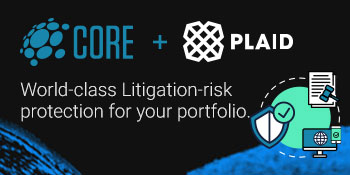Zentek Announces Its Subsidiary, Albany Graphite Corp Completed Further Material Characterization Tests Under Its Critical Minerals Innovation Fund Grant. Results Confirm That Ultra-High Purity Albany Graphite Meets Nuclear Specifications
Author: Benzinga Newsdesk | October 06, 2025 08:15am
("Zentek" or the "Company") (NASDAQ:ZTEK)(TSXV:ZEN), an intellectual property technology development and commercialization company, is pleased to share an update from its wholly owned subsidiary, Albany Graphite Corp. ("AGC") on its Critical Minerals Innovation Fund ("CMIF") grant-funded activities, further to its release dated September 22, 2025. AGC, in collaboration with American Energy Technologies Company ("AETC"), has successfully completed additional material characterization tests that confirm nuclear specifications continue to be met. The findings suggest that ultra-high purity Albany graphite could be well suited for use in the nuclear energy industry.
Highlights
Air Jet Sub-Sieve Analyzer Yield: The test confirmed that Albany graphite meets the specified particle size distribution and D50 (median particle diameter) required for nuclear applications. Significance: Achieving the proper particle size ensures the graphite can be processed efficiently and maintains consistent performance during manufacturing. This is critical for the reliability and integrity of nuclear-grade graphite components used in reactor environments.
Compressibility: Albany graphite demonstrated high compact density and low elastic expansion after compression. Significance: These properties are essential for maintaining the structural integrity and long-term stability of matrix graphite used in nuclear reactors, especially those of pebble bed type. High compact density and minimal expansion ensure components can withstand the extreme conditions present in nuclear operations.
Four-Point Resistivity: The material exhibited low electrical resistivity, indicating a high degree of graphitization. Significance: A high graphitization level enhances thermal and electrical conductivity, which is vital for efficient and safe reactor performance, especially in pebble-bed and other advanced nuclear reactors. This property supports the overall efficiency and safety of nuclear energy systems.
Coefficient of Friction: Albany graphite met or exceeded industry standards for frictional performance. Significance: Reliable coefficient of friction values help ensure that graphite components resist wear, endure mechanical motion within auxiliary reactor support systems, and have longer service lifespans. This contributes to lower maintenance requirements and improved operational reliability.
Collectively, these results demonstrate that Albany graphite not only meets but often exceeds the stringent requirements for nuclear-grade graphite. This comprehensive performance supports its suitability for demanding nuclear industry environments, reinforcing Albany graphite's potential as a safe, reliable material for nuclear energy applications.
As announced on September 22, 2025, AETC successfully purified the second batch of Albany graphite to an ultra-high 5N+ purity level (99.9992 wt.% C), indicating its potential reproducibility and suitability for nuclear applications. Additionally, subsequent elemental analysis yielded a calculated Equivalent Boron Concentration ("EBC") of 2.60 ppm, which is below the 3 ppm specification required by the nuclear industry. Achieving this low EBC is crucial, as it ensures the graphite's suitability for safe, reliable use in nuclear reactors, where boron contamination and other deleterious elements can impact reactor performance. This ultra-high purity graphite was subsequently used for additional material characterization testwork as summarized below along with the significance of the results with respect to the nuclear industry:
Air Jet Sub-Sieve Analyzer Yield: Achieving the specified particle size distribution and D50 is essential for meeting industry requirements.
Compressibility: Attaining a high compact density combined with low elastic expansion is crucial for matrix graphite powder used in the nuclear sector.
Four-Point Resistivity: Demonstrating a low resistivity, which indicates a high degree of graphitization, is critical for graphite intended for pebble-bed reactors.
Coefficient of Friction: Maintaining a low coefficient of friction is important for applications where graphite is used as an anti-friction lubricant.
The current results for the purity, calculated EBC, particle characterization, air jet sub-sieve yield, compressibility, four-point resistivity and coefficient of friction testing are summarized in the table below along with known acceptable ranges for each test.
Posted In: TSXV:ZEN ZTEK




